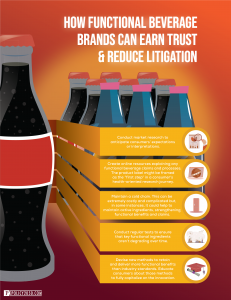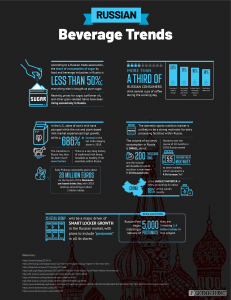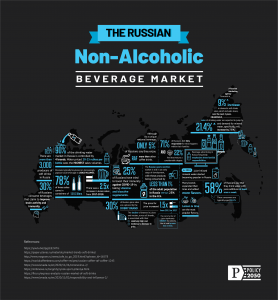Global Beverage Industry Analysis (2020-2021) — Ecommerce Growth and Functional Categories Will Redefine Iconic Brands
Multinational beverage companies are rethinking product portfolios, adjusting their operational structures/strategies, and implementing new technologies.
SAN FRANCISCO, CALIFORNIA, UNITED STATES, November 18, 2021 /EINPresswire.com/ -- Policy2050.com, a think tank for tech policy and business strategy, has publicly released the reports “Consumer Trends, Diversification, and Strategies in the Global Beverage Industry, 2021,” “Opportunities and Risks in the Functional Beverage Market, 2021,” and “Functional Beverage Market in Russia, 2021.”
These reports are being released at a time when the beverage industry is undergoing significant transformation, due to the reduction of on-premise sales, various corporate maneuvers, dramatically altered consumer routines, and a shift from sugar-sweetened beverages to functional beverages.
“Beverage consumption actually has a very close relationship with time, and so the entire beverage industry is trying to maintain the relevance of different brands and drinks as boundaries continue to blur,” said David Pring-Mill, founder and chief analyst of Policy2050.com. “For example, we see this in PepsiCo’s attempt to position an energy drink for the morning, and also in their launch of a calming still water beverage.”
PUBLIC HEALTH OPPORTUNITIES
The opportunities for public health exist on a spectrum. On the less ambitious end, beverages could become less unhealthy. On the opposite end, beverages could be well-formulated with health benefits; manufacturing processes could deliver consistent quality and appropriate levels of substances; active ingredients could remain shelf-stable; scientifically validated functional benefits could be delivered to the consumer, meeting nutritional gaps or enhancing performance; sustainability could be evaluated and improved across the entire product life cycle.
By and large, the industry has not yet achieved these ideal standards. But new consumer pressures and potentially regulation could move it closer. And the gargantuan scale of this industry means that even incremental progress will have profound effects on people’s lives, all over the world.
FUNCTIONAL BEVERAGE MARKET DYNAMICS
• The greatest market opportunity for makers of functional beverages might sound a little ironic or counterintuitive: Empower the consumer to make their own beverages.
• Despite prior skepticism over the relevance of D2C to beverages, some new functional beverage brands saw significant D2C channel growth during the pandemic.
• As researchers further explore the gut-brain connection, new findings may drive consumers to experiment with probiotic and prebiotic beverages in an attempt to relieve stress and generally improve their health. However, probiotic strains are not always capable of withstanding beverage production technologies/product mixtures and may not actually reach the GI tract of the consumer in a significant way or at all.
• Consumer perceptions and habits still vary significantly by region.
The rise in health/wellness consciousness, accelerated by the pandemic and social media, means that some Russian consumers might be ready to swap out dairy for dairy alternatives. At the same time, there is a very long history of milk being heralded as healthy, if not essential, within Russia, and those cultural impressions won’t just disappear overnight. Similarly, the perceived medical and even spiritual properties of mineral water are deeply embedded.
Beauty drinks have been successful in Asia and could potentially be imported into Western markets, following the precedent of energy drinks, but product claims would likely face a higher degree of scrutiny. Positioning these products as an extension of the water category, or creating lifestyle associations, might be more conducive to success.
• Sampling is particularly important for functional beverages but this and other types of grassroots marketing have been disrupted by the pandemic.
• Smaller beverage brands often find that it’s more advantageous to maintain less inventory and expand gradually by region. Previously, disruptive brands sometimes had to work with alternative distributors; the rapid growth in ecommerce now expands their options further.
STEPS TOWARDS ACCOUNTABILITY
Beverage brands can strengthen their functional claims and work to minimize litigation by:
1. Researching any relevant consumer segments to see what their expectations or interpretations might be.
2. Creating online resources that provide additional information about any functional beverage claims and processes. The product label might be the beginning of a consumer’s health-oriented research journey.
3. Maintaining a cold chain might be helpful. This can be costly and complicated but could work to maintain active ingredients.
4. Conducting regular tests of products to ensure that key functional ingredients aren’t degrading over time.
5. If a beverage company devises a method for retaining and delivering more functional benefits to consumers than competing brands, it needs to then educate the consumer about those methods in order to fully capitalize on that innovation.
OTHER REPORT HIGHLIGHTS:
The Policy2050 report “Consumer Trends, Diversification & Strategies in the Global Beverage Industry, 2021” is over 60,000 words, with over a dozen beverage industry strategies closely examined, along with corporate M&A and consumer trends.
The Policy2050 report “Opportunities and Risks in the Functional Beverage Market, 2021” is approximately 30,000 words and includes an analysis of the market opportunity for at-home functional beverage machines.
The Policy2050 report “Functional Beverage Market in Russia, 2021” has translated a large amount of Russian information sources into English for the first time.
Beverage industry infographics are available for use by the news media (including content marketing blogs) with proper attribution to Policy2050.com.
Report excerpts are freely available in the Quick Insights category and should be linked/cited if referenced elsewhere: https://www.policy2050.com/category/quick-insights/
Please visit https://www.policy2050.com/category/reports or contact david.pringmill@policy2050.com for more information.
David Pring-Mill
Policy2050.com
david.pringmill@policy2050.com
Visit us on social media:
Twitter



